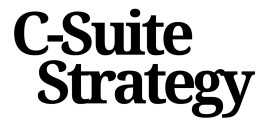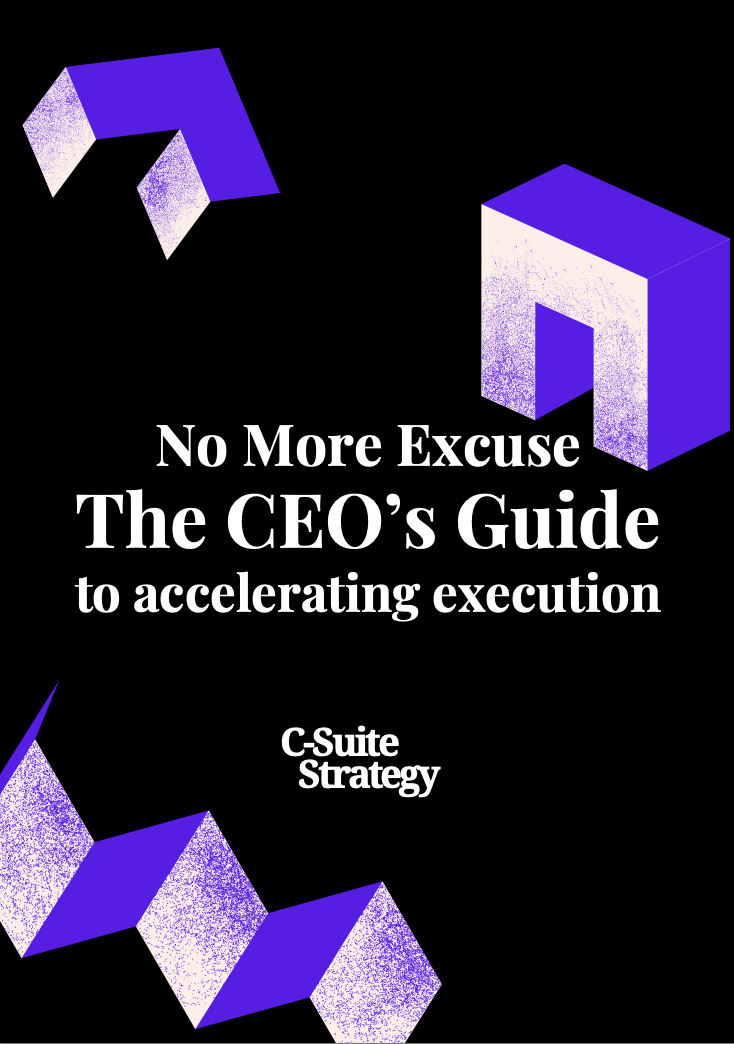
Understanding the Core of AOP Planning
Focusing on the Fundamentals of AOP Planning
Understanding the core of Annual Operating Plan (AOP) planning is vital for any organization aiming to align its yearly objectives with its long-term business vision. At the heart of this process lies a nuanced approach that combines strategic analysis, financial planning, and resource allocation to outline a roadmap for the upcoming year. Establishing clear annual goals forms the cornerstone of the AOP. These targets are usually a synthesis of company aspirations, informed by past performance indicators and current market dynamics. To effectively navigate this planning process, businesses must delve into a comprehensive analysis of their key performance measures—such as financial metrics, customer satisfaction, and supply chain efficiency—gauging past achievements and future possibilities. One critical aspect of AOP planning is data-driven decision making. By wielding robust analytical tools and past budgetary insights, companies can pinpoint strategic areas that require investment or restructuring. A thorough budget analysis ensures that the plan not only supports the immediate business goals but also aligns with broader organizational aspirations. Additionally, it is crucial to integrate flexibility within the operating plans. By doing so, organizations can remain agile, adapting to unexpected changes and opportunities with minimal disruption. This adaptability is further expounded in later sections, emphasizing how a dynamic approach can be a significant asset during the execution phase. Another essential element is the integration of external and internal stakeholders into the AOP process, achieving a synergy that enhances the overall effectiveness of the plan. As stakeholders provide invaluable perspectives that could redefine business strategies, their engagement facilitates a more comprehensive and inclusive planning process. For a more detailed breakdown of these principles and their execution, consider exploring how the continuous cycle of performance evaluation can drive improvement and strategic success (explore more here). This involvement of key players paints a holistic picture of how AOP planning is not merely a bureaucratic exercise but rather a strategic imperative for sustained growth.Aligning AOP with Strategic Vision
Building a Strategic Bridge Between Vision and Action
Crafting an effective annual operating plan is a critical task for any organization. It acts as a vital conduit, connecting a company's strategic vision with actionable steps that propel the business towards its objectives. The alignment process can be intricate, yet it is essential for ensuring that every organizational level understands their role in the broader mission. Achieving this alignment requires laying a strong foundation. Start by thoroughly assessing the strategic vision and identifying key business goals. Consider these foundational aspects:- Understanding Core Objectives: Clearly define what your organization aims to achieve in the upcoming year. Focus on high-level goals that encapsulate both short-term and long-term ambitions.
- Integration with Key Performance Indicators: Ensure that your operating plan includes performance indicators that are directly tied to strategic objectives. This integration serves as a compass for measuring success and steering the organization in the right direction.
- Aligning Financial and Resource Plans: Synchronize your financial planning with strategic aims. An aop budget should support resources allocation that aligns with these ambitions, ensuring that financial constraints do not hinder your strategic goals.
Incorporating Flexibility in AOP
Embracing Flexibility for Optimal Performance
In the realm of annual operating planning, flexibility is not just a luxury; it's a necessity. Evolving market conditions, shifts in consumer behavior, and unexpected disruptions demand that an organization remains adaptable to maintain its strategic edge. As you craft your plan, consider these pivotal strategies:
- Dynamic Resource Allocation: Recognize that the needs of your business goals can change throughout the year. By fostering a culture that supports agile resource allocation, an organization can pivot swiftly in response to market dynamics and unforeseen challenges. Flexibility in financial planning and budgeting processes ensures that resources are directed towards the most critical and timely objectives.
- Integrated AOP and Business Environment: The aop should not be a rigid document but rather a living strategy that interacts with the broader business environment. Incorporating adaptability into your yearly objectives allows for responsive adjustments in plans when key performance indicators or external conditions indicate necessary changes.
- Feedback Loops and Iterative Processes: Establish clear feedback mechanisms within the aop process. Regular evaluation of performance indicators and key metrics provides insights into what's working and what isn't, allowing strategic adjustments. An iterative planning process supports continuous improvement and alignment with strategic priorities.
The importance of incorporating flexibility cannot be overstated. In today's volatile business landscape, understanding how to integrate adaptability into your operating plan will empower your organization to seize opportunities and mitigate risks effectively. As referenced in our related article on crafting a compelling investment thesis, aligning your strategic vision with flexible planning can lead to sustainable growth and enhanced business performance.
Engaging Stakeholders in the AOP Process
Engaging Stakeholders Throughout the AOP Journey
In the intricate dance of planning and executing an annual operating plan, ensuring stakeholder engagement becomes pivotal. This involvement is not just about gathering input; it’s about making sure that every layer of your organization is aligned and moving in unison toward a common strategic vision.- Emphasize Communication: Begin by establishing transparent channels where stakeholders at all levels feel heard and valued. Effective communication is the cornerstone around which you can build consensus, reduce resistance, and encourage ownership of goals and objectives.
- Unified Vision and Goals: Aligning the AOP with your company's strategic vision is essential. Stakeholders must understand how their input integrates into wider business goals. This clarity helps form a supportive foundation for the operating plan and instills a sense of purpose and direction.
- Incorporate Diverse Perspectives: Engage teams across various departments, from finance to supply chain, to ensure a holistic approach to the AOP. This not only garners valuable insights but also helps in understanding potential bottlenecks and areas needing resource allocation.
- Performance Indicators and Feedback: Establish key performance indicators (KPIs) that allow stakeholders to track progress, measure success, and provide feedback. An ongoing, dynamic cycle of assessment and adjustment ensures that the plan remains relevant and responsive to changing circumstances within the business landscape.
- Empower Decision Making: By involving key stakeholders in decision-making, the planning process becomes more adaptable. This empowerment leads to more strategic resource allocation and better preparedness to tackle unforeseen challenges, keeping the AOP both robust and flexible.
Measuring Success and Adjusting the AOP
Evaluating the Impact of Your AOP
As the year unfolds, the annual operating plan (AOP) serves as a compass guiding your organization toward its strategic objectives. However, to ensure this compass remains accurate, it is crucial to measure the success of your AOP regularly. This involves not only tracking financial performance but also assessing how well your company is meeting its business goals and utilizing its resources.
Key Performance Indicators: Your AOP's Scorecard
To effectively measure the success of your AOP, it is essential to establish clear key performance indicators (KPIs) at the outset. These KPIs should align with your strategic vision and provide a tangible measure of progress. Consider incorporating both financial and non-financial indicators to capture a comprehensive view of performance. This balanced approach allows for a more nuanced understanding of your organization's achievements and areas for improvement.
Adapting to Change: Flexibility in Execution
The business environment is dynamic, and unforeseen challenges can arise at any moment. Incorporating flexibility into your AOP enables your organization to adapt to these changes without losing sight of its strategic goals. Regularly reviewing and adjusting your AOP based on performance data ensures that your plans remain relevant and effective throughout the year. This adaptability is a critical component of successful AOP execution.
Data-Driven Decision Making
In today's data-rich environment, leveraging analytics is paramount to refining your AOP. By continuously monitoring performance indicators and financial data, you can make informed decisions that enhance resource allocation and operational efficiency. This data-driven approach not only supports the achievement of your annual objectives but also strengthens your organization's overall strategic positioning.
Engaging Stakeholders in the Evaluation Process
Engagement with stakeholders is vital for gaining a holistic view of your AOP's effectiveness. By involving key players in the evaluation process, you can gather diverse insights that inform adjustments and improvements. This collaborative approach fosters a sense of ownership and commitment to the AOP, driving collective success.
In summary, measuring the success of your AOP is an ongoing process that requires a combination of clear KPIs, flexibility, data-driven insights, and stakeholder engagement. By focusing on these elements, your organization can navigate the complexities of the upcoming year with confidence and strategic clarity.
Leveraging Technology for Effective AOP Execution
Enhancing AOP Execution with Modern Technologies
In the world of annual planning, leveraging advanced technologies can substantially amplify the effectiveness of your annual operating plan. The integration of tech-driven tools creates a more streamlined planning process and paves the way for smarter decision making. Here's how:
- Data Analytics: Implementing data analytics tools ensures that business goals are backed by data-driven insights. These tools can provide real-time performance indicators, which are instrumental in tracking progress and aligning annual objectives with your strategic vision.
- Automated Financial Planning: Automating parts of the financial planning process, such as budget forecasting and resource allocation, minimizes errors and frees up valuable resources. It also offers a clearer picture of financial projections, facilitating better strategic decisions.
- Decision-Support Systems: Integrating decision-support technologies helps in monitoring key performance indicators (KPIs) effectively, enabling the organization to respond swiftly to emerging trends and adjust plans accordingly. This flexibility is critical for addressing unforeseen challenges and adapting to market shifts.
- Collaboration Platforms: Embracing digital collaboration platforms can foster more dynamic stakeholder engagement in the AOP process. These platforms allow teams to communicate efficiently, ensuring that everyone is aligned with the company’s strategic goals for the upcoming year.
- Supply Chain Management Software: A cutting-edge supply chain management system empowers a company to optimize its operations, crucial for achieving business goals and enhancing overall performance.
By embedding these technologies into your plan, the company can elevate its AOP execution from just setting targets to systematically achieving them. And as the business environment continues to evolve, being tech-savvy in the planning process becomes not just advantageous, but indispensable for long-term success.














